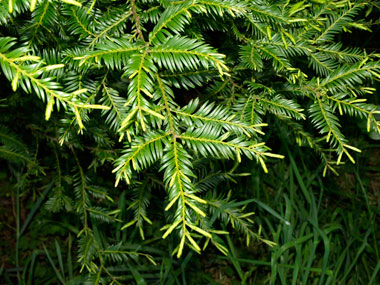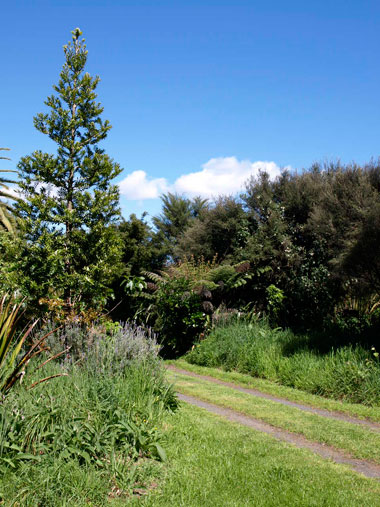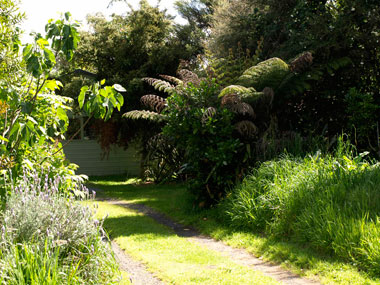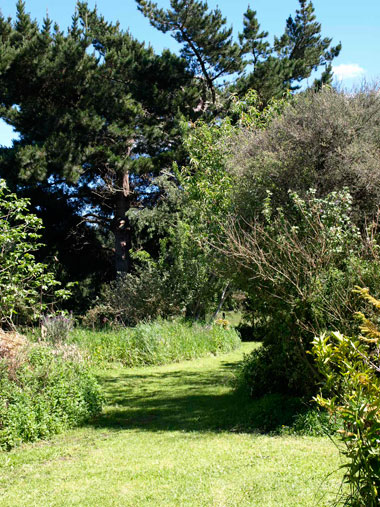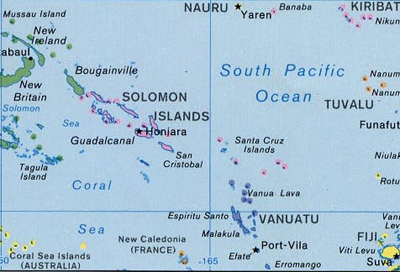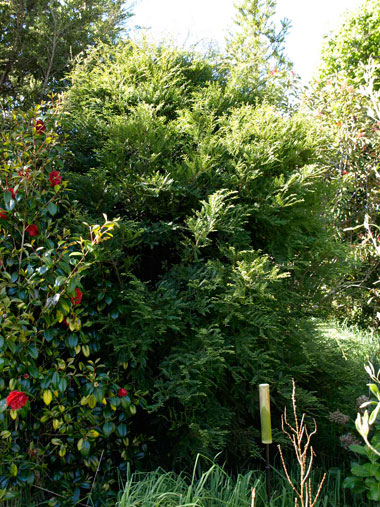
|
Proceeding on to Stage 5, In order to get to the next stage you will have to first go across to the northern boundary of the garden and down hill to the point marked "4b" on the map. You have to pass this point whatever round-trip route you take to Stage 5. You can do this by following the illustrated directions below, and clicking on the first link at the bottom of this column. Alternatively, you can click on the second one if you are tired of voyaging and wish to retreat to Stage 3, the Proto-Oceanic era..
|
To resume your journey, turn back to the main driveway and continue on, past the ponga tree fern ...
towards the garage, where you turn right ....
and proceed in the direction of the pine trees.
|
To go on towards Stage 5 (Proto Central Pacific),
click here.
"Time travel walk" - Stage 4
"Proto Eastern Oceanic" (about 3,200 years ago)
This period marks the arrival of Austronesian speakers at the end of the known world. Up until that time, no human being had gone further east in the Island Pacific than the islands now known as the Solomons. About 1200 BC the Austronesian explorers started sailing towards the terrae inognitae of Vanuatu (the course followed by those who became the ancestors of the Polynesians) and New Caledonia. Further linguistic change took place at this time, but it is difficult to attribute many of the new words to a single hypothetical ancestral language, which is why I have put quotation marks around the proto language name in the heading of this paragraph. Our word representing this period is *milo, inherited in that form by Proto-Polynesian, and therefore reflected in Mäori as miro. As will be clear from the comments on the linked pages about the New Zealand miro (Prumnopitys ferruginea) and its pan-Oceanic counterpart (Thespesia populnea), which is very distant from it botanically, the Miro is one of my favourite trees, and there is good reason to suspect that the early Polynesians and their ancestors were equally fond of its namesake the Thespesia.
The important thing, historically and linguistically, about this period is that it was the time when "Near Oceania" ceased to be the eastern edge of the known world. It also marked the beginning of an age when speakers of what would become a substantial group of Austronesian languages would have no contact for centuries and in fact for millennia with people who spoke other languages unrelated to their own.
|
Clicking the links below will take you to the pages with information about the word representing this period and the plants it has come to designate. *Milo (Proto-Polynesian form) Miro (Modern Mäori) Both pages have links to other names incorporating the root word miro.
|
|
|
|
Te Mära Reo, c/o Benton Family Trust, "Tumanako", RD 1, Taupiri, Waikato 3791, Aotearoa / New Zealand  This work is licensed under a Creative Commons Attribution-Noncommercial 3.0 New Zealand License. This work is licensed under a Creative Commons Attribution-Noncommercial 3.0 New Zealand License. |
